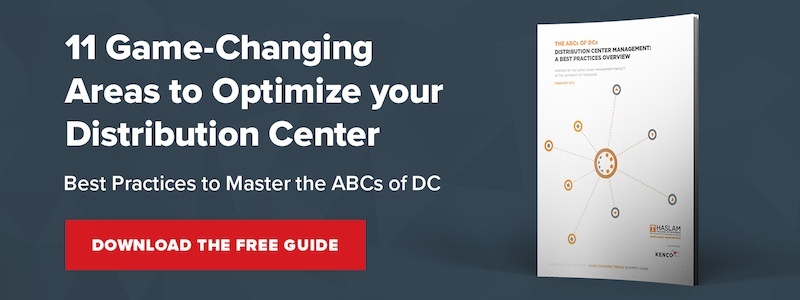
In today’s active world we are hearing more about getting employees within the organization engaged at work. This is not only for the leadership team, but also for the hourly workforce.
For the sake of this discussion let’s define engaged employees as those that work with passion and feel a profound connection with their company. These individuals drive innovation, continuous improvement, and move the organization forward each and every day.
An Engaged Workforce
With engaged employees defined, let’s as ask why having an engaged workforce so important? Gallup reported in their 2013 “State of the American Workforce Survey” the following key statistics:
- Organizations with an average of 9.3 engaged workers for every actively disengaged employee in 2010-2011 experienced 147% higher earnings per share (EPS) compared with their competition in 2011-2012.
- In contrast, those with an average of 2.6 engaged employees for every actively disengaged employee experienced 2% lower EPS compared with their competition during that same period.
- Gallup estimates that active disengagement costs the U.S. $450 billion to $550 billion per year.
- Work units in the top 25% of Gallup’s database have significantly higher productivity, profitability, and customer ratings, less turnover and absenteeism, and fewer safety incidents than those in the bottom 25%.
Time For A Walk
While there are many things that affect employee engagement, getting leadership to the place where work is done (the “GEMBA” in Japanese) and actively engaging with the workforce, seeing with their own eyes the problems that occur, listening to associates and giving advice and direction (coaching) to the team is a critical factor in increasing overall engagement.
The “GEMBA Walk” process formalizes this on-the-floor time, and combines it with visual management to create a very powerful force that fosters continuous improvement, aligned objectives and a more engaged workforce.
Finding The Right Management Style
If we think of the different management styles of the last 20 years we have seen the older “dictator” style which is analogous to “Do it my way…” to the newer “empowerment style” which is analogous to “Do it your way…” Each of these methods have serious drawbacks.
With the “leader as dictator” style, there is no transfer or cascade of responsibility. If something goes wrong, the idea came from someone else, so the responsibility is his or hers. Along the same lines, the “empowering leader” just sets goals and lets everyone do as they please (MBO – management by objective). This creates loss of focus, direction and control.
The “lean” style is “Follow me, we will figure this out together…” This process is much more effective at bringing buy-in, continuous improvement and increasing engagement across the organization. The three keys to lean leadership and increasing engagement across the organization is go see, ask why, and show respect. The only place where this can occur is at the GEMBA and that is why GEMBA walks are so important.
Conducting GEMBA Walks
While conducting structured GEMBA walks has many benefits, here are nine reasons why leaders should be doing GEMBA walks:
- GEMBA walks build relationships with those that do the work and create value in the organization.
- Interacting with employees at the GEMBA enables leaders to uncover problems and eliminate them quickly.
- GEMBA walks provide leaders with the opportunity to praise people for the good work that they do.
- Management can be sure that the work that needs to be done is getting done.
- Goals and objectives can clearly be communicated face-to-face.
- A visible leader can increase employee engagement.
- GEMBA walks can help develop people through coaching and mentoring.
- GEMBA walks can help the leader validate data, emails and spreadsheets with their own eyes.
- GEMBA walks can enable accountability to occur since the leader is not disconnected from the actions or results. When they “see it” they “own it”.
A GEMBA walk should be a daily, scheduled time where the manager in a facility is out on the “shop” floor and publicly reviews the shop’s performance as displayed on the visual management boards. Although I use “shop” here, it is a term that describes where the value creation occurs. The shop could be places like the warehouse, the accounting office, and the shipping office or anywhere work is done.
The manager walks through the shop, stopping at each visual management board to review the current results. A lower-level manager (or better yet, an hourly associate) presents data to the manager, who can then recognize/praise good performance and ask questions about problems that prevented good performance. The questions the manager asks should help the team identify possible causes or problems. These problems would then be the focus for continuous improvement activities. An experienced manager will never give the answers to the team; rather he or she will lead them to the answer by asking a series of questions. This serves two primary purposes.
How GEMBA Helps
First, it teaches the teams to problem solve and it creates more engagement from the team. Secondly, it shows the employee how important their feedback is because the leader took time to come to their work area to understand their reality (problems and conditions they are working with). In reality, what the leader is doing is checking results against a standard. Usually, some of the initial walks are helping the team create the initial standards.
There is simply nothing more powerful than going to the Gemba and “seeing” things with your own eyes. As Taiichi Ohno one said, “Data are of course important, but I place greater emphasis on facts. Facts can only be found on the Gemba”.
As the leader walks the process and encounters people and processes along the way, there are seven “probing” questions he or she should always ask:
- What is the problem?
- Who owns the problem?
- What is the plan?
- What is the current status of the plan? How will it be monitored?
- What worker training is needed?
- How does this problem relate to the organization’s most important goals?
- What leader development is needed?
To Sum It All Up
Remember, as the leader engages the people and processes, he or she should always show respect and understand if something is amiss, it is not the individuals fault, rather the process and the leader are the guilty parties.
As leaders, we should spend the majority of our time on the GEMBA engaged with both the people and process. This time should be structured and not what I call“Industrial Tourism” where all the leader does is walk around and shake hands and kiss babies. This is superficial and actively works to disengage employees.
A former President of Toyota once told me he spent more than 80% of his time at the GEMBA helping solve problems and removing the burden from the workforce. By doing so, he is helping develop those that he encounters and this creates a more engaged workforce.
If you would like to learn more about GEMBA and how to implement it in your workplace, check out our eBook: The ABCs of DCs.



